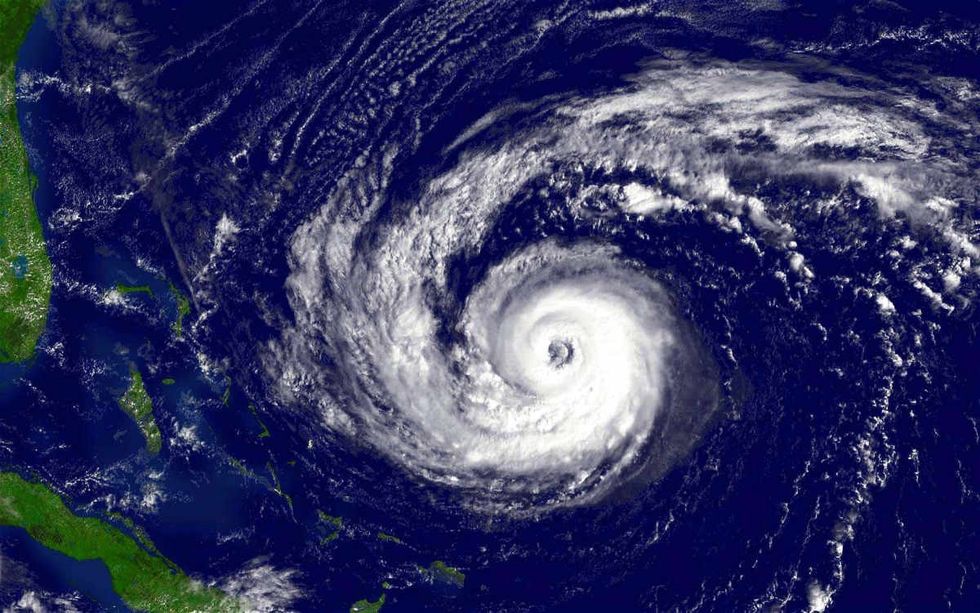Unlike “black holes” that attract and swallow the surrounding cosmic matter, a “gravity hole” pushes away the surrounding material due to lack of gravitational force. When formed in an ocean, a gravity hole pushes away water and creates pockets of air where there should have been water, lowering the sea level. Take the instance of the world’s largest, and deepest gravity hole, discovered in the Indian Ocean. Causing the sea level to dip by 348 feet (106 meters), the hole perplexed geologists for decades, until 2023, when some researchers gave a potential explanation for it in a study published in the journal Geophysical Research Letters. The mystery lies in a sunken ancient Indian sea, reported CNN.

Called the “Indian Ocean geoid low (IOGL),” this gravity hole is located about 1,200 kilometers (750 miles) southwest of Kanyakumari, the southernmost tip of the Indian subcontinent. It is a 1.2 million-square-mile (3 million square kilometers) circular depression lurking in the ocean’s waters. Compared with its surroundings, the gravity is weaker in this area. “It is by far the biggest low in the geoid, and it hasn’t been explained properly,” said study co-author, Attreyee Ghosh, a geophysicist and associate professor at the Centre for Earth Sciences of the Indian Institute of Science.

Initially, a Dutch geophysicist, Felix Andries Vening Meinesz, discovered the hole, in 1948, during a gravity survey from a ship. Felix had invented a device called “Golden Calf” to measure gravity at seas, per Big Think. Since then, researchers have attempted to explain this oceanic abyss' existence. "The origin of this geoid low has been enigmatic. Different theories were put forward to explain this negative geoid anomaly," the researchers wrote in the study. In 2023, some researchers from the Indian Institute of Science, Bengaluru, proclaimed that they had found an explanation. Their hypothesis is, that the hole was formed as a result of an ancient ocean that no longer exists. They believe that plumes of magma rising from deep inside the planet are responsible for the existence of this gravity hole.

To establish the base for understanding, Ghosh explained that the secret lies in the geometry of Earth. Against what most people believe, Earth is not a perfect sphere. “The Earth is basically a lumpy potato,” she said, “So technically it’s not a sphere, but what we call an ellipsoid, because as the planet rotates the middle part bulges outward.”

In addition to this, Earth is not even uniform in its density and properties. Some areas are denser than others, which affects Earth’s surface and its gravity, she explained, and added, “If you pour water on the surface of the Earth, the level that the water takes is called a geoid — and that is controlled by these density differences in the material inside the planet because they attract the surface in very different ways depending on how much mass there is underneath.” Live Science described this geometrical anomaly behind the geoid low as, “The low is a consequence of our surprisingly squidgy planet, which flattens at the poles, bulges at the equator and undulates between lumps and bumps across its surface.”
Ghosh, with her fellow researchers, took the whole story back to 140 million years ago. She said back then, “the continents and the oceans were in very different places, and the density structure was also very different.” Starting from that timescale, the team plotted 19 simulation models till the present day, recreating tectonic history and the behavior of magma inside the mantle. In six of the models, a geoid low similar to the one in the Indian Ocean formed.

In each of these six models, they observed the presence of plumes of magma around the geoid low, which they believed were responsible for the formation of the “gravity hole,” said Ghosh. They further suggested these plumes were formed when an ancient Indian ocean disappeared millions of years ago.

“India was in a very different place 140 million years ago, and there was an ocean between the Indian plate and Asia. India started moving north and as it did, the ocean disappeared and the gap with Asia closed,” she explained. As per the team, when the oceanic plate squished inside the mantle, it could have prompted the formation of the plumes, bringing low-density material closer to Earth’s surface, reducing the region’s mass and weakening the gravity. Over 100 million years ago, the Indian plate broke off from the supercontinent of Gondwana and smashed into the Eurasian plate. This collision eventually ended up forming the Himalayas, but before that happened, the Indian plate crossed over the Tethys plate, pushing it under the Indian plate.
It was shoved away into the mantle which is the present-day location near East Africa. Eventually, around 20 million years ago, the sinking Tethyan plates moved the African blob's trapped magma, leading to the formation of the plumes. "These plumes, along with the mantle structure in the vicinity of the geoid low, are responsible for the formation of this negative geoid anomaly," the researchers wrote in the study.
Discussing whether the gravity hole will stay or shift or disappear, Ghosh told CNN, “That all depends on how these mass anomalies in the Earth move around. It could be that it persists for a very long time. But it could also be that the plate movements will act in such a way to make it disappear, a few hundreds of millions of years in the future.”


















 A lemon shaped planet the size of Jupiter.Credit:
A lemon shaped planet the size of Jupiter.Credit:  Image from a Pulsar star releasing gamma rays.NASA/CXC/SAO/
Image from a Pulsar star releasing gamma rays.NASA/CXC/SAO/  James Webb Space Telescope primary mirror.NASA/MSFC/David Higginbotham/
James Webb Space Telescope primary mirror.NASA/MSFC/David Higginbotham/ 


 A woman looks at post-it notes while thinking Canva
A woman looks at post-it notes while thinking Canva Two women on a couch are having a conversationCanva
Two women on a couch are having a conversationCanva A father and son sit on a porch talking Canva
A father and son sit on a porch talking Canva A woman paints on a canvasCanva
A woman paints on a canvasCanva A student high-fives with his teacherCanva
A student high-fives with his teacherCanva
 Cute dog looks off camera at someoneCanva
Cute dog looks off camera at someoneCanva

 A road near equatorial Atlantic OceanCanva
A road near equatorial Atlantic OceanCanva Waves crash against rocksCanva
Waves crash against rocksCanva
 Older woman drinking coffee and looking out the window.Photo credit:
Older woman drinking coffee and looking out the window.Photo credit:  An older woman meditates in a park.Photo credit:
An older woman meditates in a park.Photo credit:  Father and Daughter pose for a family picture.Photo credit:
Father and Daughter pose for a family picture.Photo credit:  Woman receives a vaccine shot.Photo credit:
Woman receives a vaccine shot.Photo credit: